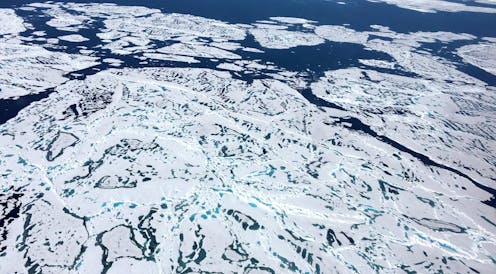Video: How simple math can help predict the melting of sea ice
Understanding sea ice loss requires expensive and difficult expeditions. Scientists have developed a new model that predicts the growth of small ponds on sea ice more efficiently.

To better predict climate change, scientists need accurate models which predict the behavior of many natural processes. One of these is the melting of arctic sea ice, which requires expensive and difficult data collection in the Arctic.
Physicist Ivan Sudakov at the University of Dayton and his colleagues have developed a new method to understand the growth of small ponds on sea ice. They developed a model which borrows ideas from the 100-year-old Ising model that simulates the behavior of ferromagnetic materials.
This video shows how these small ponds form on the ice, and how the model can be used to understand the process more efficiently.
Read These Next
The world risks forgetting one of humanity’s greatest triumphs as polio nears global eradication − 7
Polio may finally be defeated in the next 5 years. Will the world recognize what an extraordinary achievement…
Why are some Black conservatives drawn to Nick Fuentes?
Black Americans and white nationalists have joined forces in the past. And a number of cultural and…
How C-reactive protein outpaced ‘bad’ cholesterol as leading heart disease risk marker
C-reactive protein – a marker of inflammation – is as easily measured with blood work in a doctor’s…






